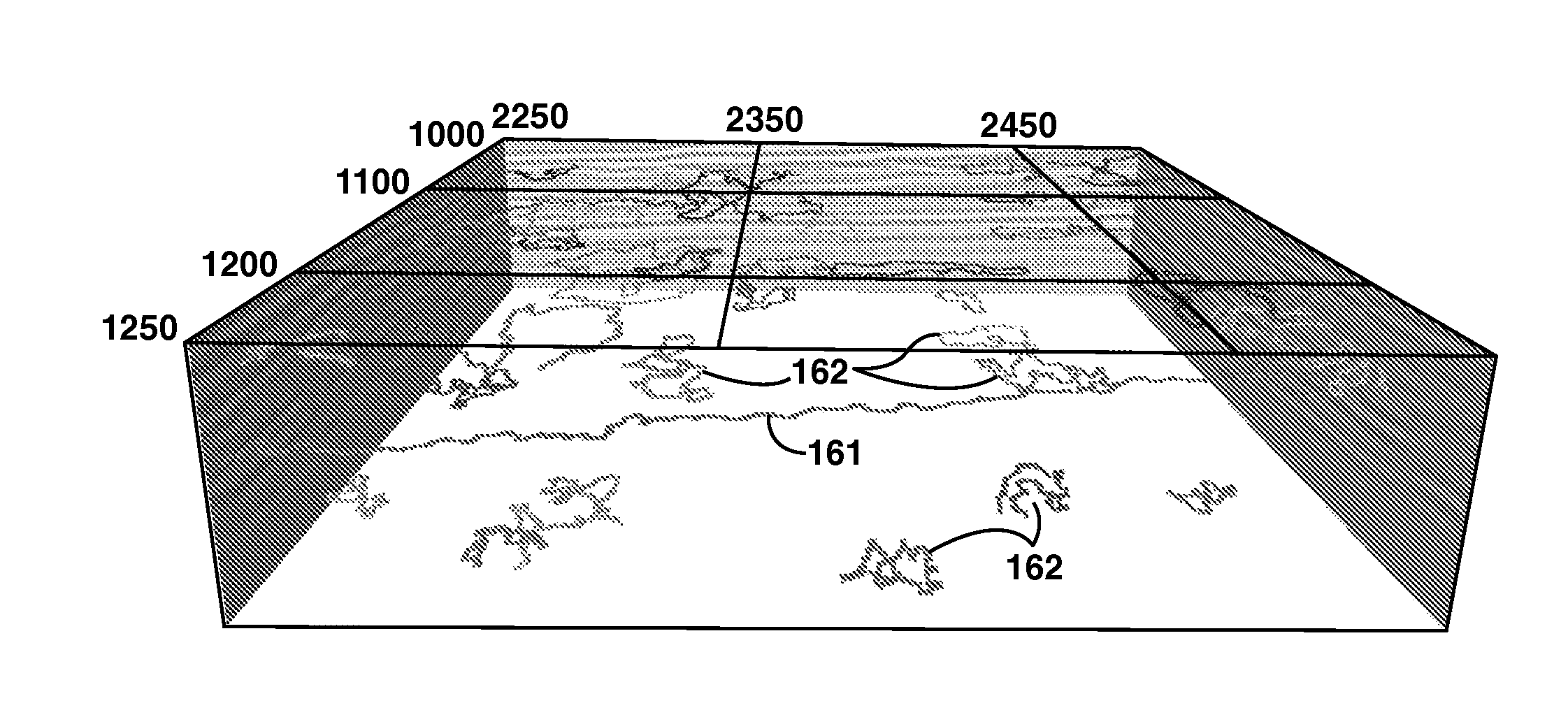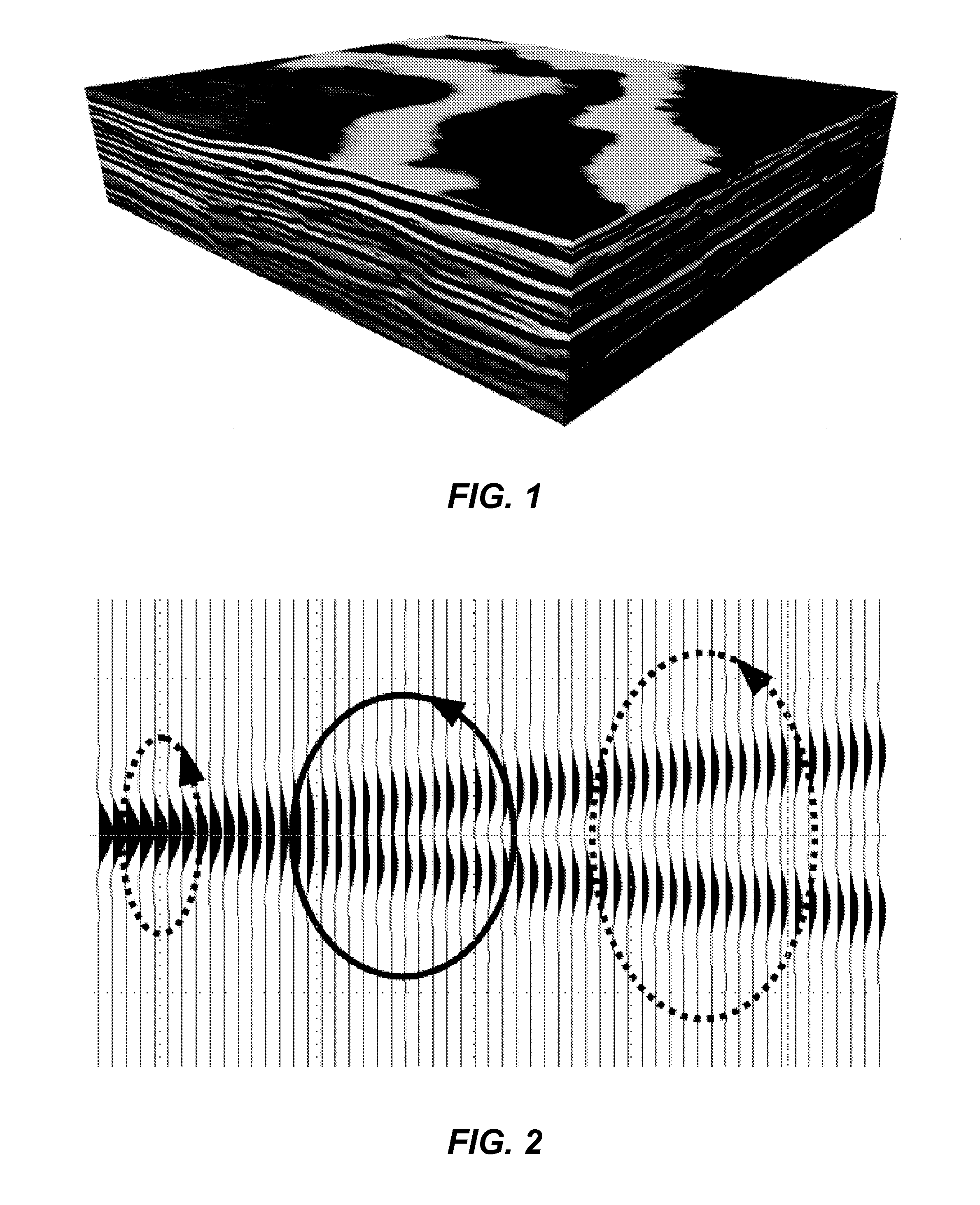Method For Geophysical And Stratigraphic Interpretation Using Waveform Anomalies
a waveform anomaly and geophysical technology, applied in the field of geophysical prospecting, can solve the problems of not being able to identify many other properties of the subsurface, not being able to provide a systematic way of lining up, and not being able to identify the majority of residues
- Summary
- Abstract
- Description
- Claims
- Application Information
AI Technical Summary
Benefits of technology
Problems solved by technology
Method used
Image
Examples
example
[0095]The example is for a seismic data volume with a size of 501 by 501 by 149 samples. This volume is shown in FIG. 1. Following the method of FIG. 7, the volume was converted to the wavelet-split attribute volume shown in FIG. 4 by applying complex trace analysis to compute the instantaneous phase (step 102 in FIG. 10.) followed by computation of instantaneous phase residues (steps 102 and 103). The resulting wavelet-split attributes where then converted to wavelet-split objects shown in FIG. 14 by connected component labeling (step 75). A first classification and selection (step 76) was based on object size. Small loops often correspond to noise. Huge loops often relate to seismic processing artifacts or large-scale structural features. FIG. 15 presents the objects remaining after removal of both tiny and huge objects.
[0096]First, the seismic amplitude volume was converted to a seismic instantaneous phase volume (step 102 in FIG. 10). Second, the phase residues were computed (st...
PUM
 Login to View More
Login to View More Abstract
Description
Claims
Application Information
 Login to View More
Login to View More - R&D
- Intellectual Property
- Life Sciences
- Materials
- Tech Scout
- Unparalleled Data Quality
- Higher Quality Content
- 60% Fewer Hallucinations
Browse by: Latest US Patents, China's latest patents, Technical Efficacy Thesaurus, Application Domain, Technology Topic, Popular Technical Reports.
© 2025 PatSnap. All rights reserved.Legal|Privacy policy|Modern Slavery Act Transparency Statement|Sitemap|About US| Contact US: help@patsnap.com



